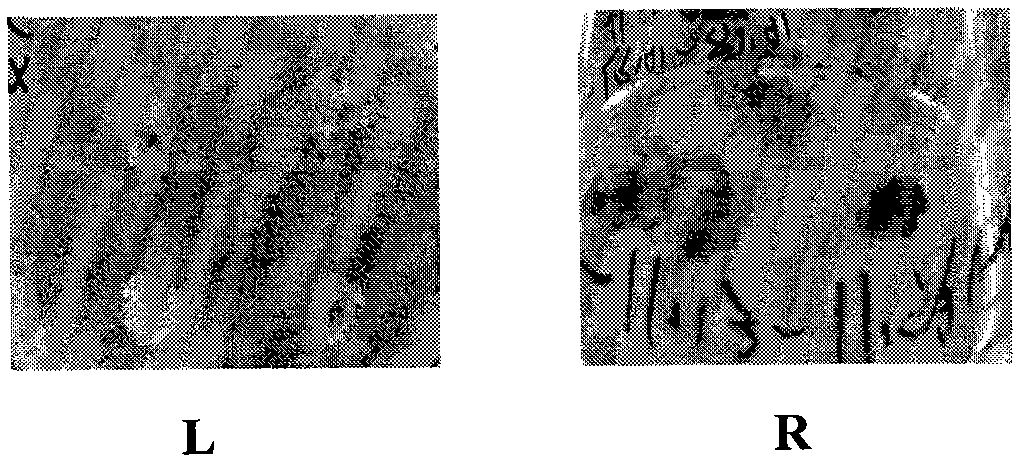Method for increasing efficiency of tissue culture of Medicago sativa L.
A technique of tissue culture and alfalfa, applied in the field of plant biology, can solve problems such as insufficient callus formation and differentiation, long induction time of alfalfa tissue culture, explant contamination, etc., to retain differentiation ability and increase callus induction rate , The effect of low seed pollution rate
- Summary
- Abstract
- Description
- Claims
- Application Information
AI Technical Summary
Problems solved by technology
Method used
Image
Examples
Embodiment
[0036] 1. Seed sterilization and acquisition of sterile vaccines
[0037] Select seeds with full grains, soak in 75% alcohol for 1 minute, soak in 1% mercuric acid for 5 minutes, then soak in 30% hydrogen peroxide for 30 minutes, then rinse with distilled water for 3-4 times, put the rinsed seeds on filter paper to absorb the water , inoculated in solid medium (pH=6.0). Medium formula: MS+agar (7.5g / L)+sucrose (30g / L). Culture conditions, 25°C, light intensity 2500lk, divided into light and dark cycle 16 / 8h, cultured for 5-7 days.
[0038] By adopting the compound disinfection method of mercuric chloride and hydrogen peroxide, the disinfection effect is thorough, the pollution rate is low, and the damage to the seeds is minimized, finally solving the current serious problem of explant contamination.
[0039] 2. Induction of Callus
[0040] Select robust seedlings, and intercept the hypocotyls (the part above the root and below the stem). Cut it into 1cm segments and place ...
PUM
 Login to View More
Login to View More Abstract
Description
Claims
Application Information
 Login to View More
Login to View More - R&D
- Intellectual Property
- Life Sciences
- Materials
- Tech Scout
- Unparalleled Data Quality
- Higher Quality Content
- 60% Fewer Hallucinations
Browse by: Latest US Patents, China's latest patents, Technical Efficacy Thesaurus, Application Domain, Technology Topic, Popular Technical Reports.
© 2025 PatSnap. All rights reserved.Legal|Privacy policy|Modern Slavery Act Transparency Statement|Sitemap|About US| Contact US: help@patsnap.com



